#imaging sensor
Explore tagged Tumblr posts
Video
youtube
SincereFirst CMOS OV7670 Imaging Sensor 0 3MP Camera Module
SincereFirst CMOS OV7670 Imaging Sensor 0.3MP Camera Module is a low-cost CMOS color camera module that can output VGA resolution images of 640x480 at 30fps. It only requires a single 3.3V power supply and can be used on devices such as Arduino, STM32, Chipkit, ARM, DSP, FPGA and others. This module provides complete single-chip VGA camera functionality and image processing in a small size with high sensitivity.
#youtube#Camera Module#SincereFirst#sincere first#CMOS OV7670 Imaging Sensor#CMOS#CMOS OV7670#imaging sensor
2 notes
·
View notes
Video
youtube
SincereFirst CMOS IMX377 Imaging Sensor 12MP Camera Module
The advantage of SincereFirst CMOS IMX377 Imaging Sensor 12MP Camera Module is that it uses SONY's IMX377 CMOS image sensor, which has a resolution of up to 12.35MP and provides full-frame 4K video recording, The frame rate is 60 fps. In addition, the IMX377 features an electronic shutter, high-speed readout and low noise. These features make it ideal for applications such as digital cameras, action cameras and surveillance cameras.
0 notes
Text
alpha beta charlie's not even a wordgirl insert anymore they're my friend my child my mascot my silly rabbit anyway i way playing guitar today

ABCDEFGHIJ LMNOP RSTU WXYZ
23/26
#and per se and#unfortunately this image inflames my cringe sensors. but you people will like it a bit so fuck em
671 notes
·
View notes
Text
On the string propaganda
Heeellll yeah
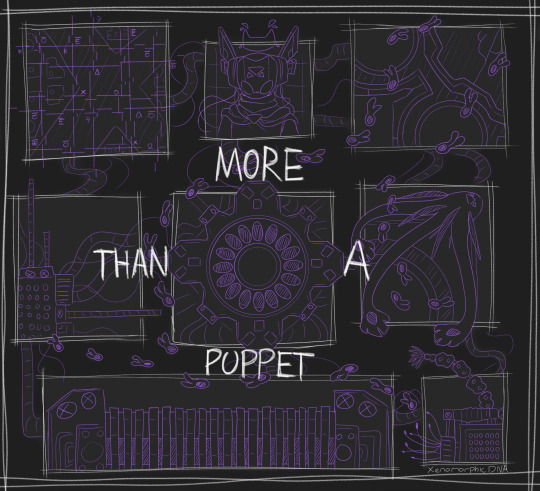
Bestie is an entire PLACE
I look at those guys and let me tell you the soul of that thing ain't just in the puppet, it's in all the neurons carrying the thoughts and emotions, it's in the power rails that serve as the heart. All the memories in the memory conflux and all the numbers we see flicker across displays, the flux condensers, the puppet; a little avatar.
No way these massive machines see life the same way we do. They have their own experiences and senses and things they hold dear. A world we can't imagine, a way of living we couldn't even comprehend.
I could never tear an iterator apart to be just a puppet. Who am I to decide how's life supposed to be enjoyed or perceived?
You treat your creechurs however you want- I ain't gonna dictate that. But damn, hearing the thrums and buzzes of the linear systems rail? They are alive with so much power, these mechanical beasts are exactly what they should be.
#sorry im just a really passionate on the string believer#you cant tell me that these massive structures kilometers wide capable of things we cant even image would look at something thats#thats comparable to a speck of dust and be like#yes i would like to rid myself of practically my entire body to be that tiny#this aint no “if i were a supercomputer i'd be sad i couldnt see the sky like i do now”#thats only because you have something to compare it to#if i were to suddenly loose everything to be just some microscopic creature i'd be miserable but only because i know what im loosing#id be loosing the ability to think like i do now id be loosing the ability to enjoy the things i do now#i dont know what life is like as a microscopic creature but i wouldnt be willing to give up my life as i know it now#and i think with iterators are the same#just how different is their life from ours and what things can they see that we are missing out on?#give up everything comfortable and known and for what??#to feel the sun? they absolutely have various temperature sensors#see the sky? those overseers were made to see things those visuals are in 4k#other animal comforts?? what about computer comforts??#what makes a lil creature happy may not necessary make a massive supercomputer happy#sorry big rant in the tags um just wanna say this is no hate to anyone who wants their creatures off the string#these are fictional beings and you do whatever makes you happy take them off the string set them loose yess enjoy little robots running#around be happy i love reading ya alls off the string shenanigans#rain world#iterator#drawins#oc veil of dreams#rw talk#rain world oc#iterator oc
381 notes
·
View notes
Text


silverfanbrush
#I like this ship for some reason#fan and silver would compete for attention i think#my art#maow#text#image#ii silverfanbrush#ii silverbrush#ii silverfan#ii fanbrush#fun fact fanbrush is one of the only ships that doesn't trigger silver (alter)'s jealousy sensors#Like he's just fine w/ it for some reason#But then he thinks abt any other brush ship and is like But What Abt ME#oh I forgor the character#ii fan#ii silver spoon#ii paintbrush
62 notes
·
View notes
Text
..theres a lot of really odd mature warning sensoring going on on my dash today?
#lots of posts that dont have anything that needs sensoring in them getting flagged for some reason#no mature text or images and its just?#ive seen this like four or five times today. tumblr has never flagged actually innocent wrestling content for me before#what is happening#night is an absolute mess on main
10 notes
·
View notes
Text

I figured it out.
#My posts are getting censored. For posting bunnies. [tumblrs sensors are being sensitive and picking something?????? Up they don’t like] lol#It all makes sense now aughhhh#No wonder every time there’s a problem it’s specific to the image and not the text. I feel so stupid.#anyway I don’t know how to fix this lol.
11 notes
·
View notes
Text
I had a thought in the car today, regarding Voyager.
What if, had it been a generational ship, they had a, "You must be this tall to enter this section" sign outside sensitive areas, and if they're not tall enough, they're not getting in. Probs be easy enough to set up, but B'Elanna has to lock both Tom and Harry out of it as they keep adding the sub routine to each other's quarters and she just wants to sleep.
#star trek: voyager#it just tickled me as did the image of naomi (or another kid) trying to trick the sensor !#and the computer being all 'i said access denied'
4 notes
·
View notes
Text
Airborne Optronics Market Share Analysis: Leading Players & Regional Insights

The Airborne Optronics Market is experiencing rapid expansion, fueled by increasing demand for advanced electro-optical systems in military, commercial, and urban air mobility applications. The market, valued at USD 1.4 billion in 2020, is projected to reach USD 2.5 billion by 2025, growing at a CAGR of 12.7%. As defense forces, security agencies, and commercial aviation sectors adopt cutting-edge imaging and surveillance technologies, airborne optronics is becoming an integral part of modern aircraft and UAV systems.
Technological advancements, rising investments in defense modernization, and the growing use of unmanned aerial vehicles (UAVs) for surveillance and reconnaissance are among the key factors driving the market forward. Additionally, the expansion of urban air mobility (UAM) platforms, including air taxis and autonomous cargo drones, is expected to increase the demand for advanced airborne imaging and detection systems.
The Impact of COVID-19 on the Airborne Optronics Market
The COVID-19 pandemic had a notable impact on the Airborne Optronics Market, leading to disruptions in supply chains and temporary slowdowns in aircraft production. In 2020, aircraft orders and deliveries declined, affecting demand for airborne optronics. Industry experts estimated that the pandemic resulted in a 7–10% impact on production and services worldwide.
Despite these challenges, recovery began in early 2021 as aerospace manufacturers resumed operations. The increased reliance on UAVs for autonomous surveillance, border security, and ISR (intelligence, surveillance, and reconnaissance) missions contributed to the resurgence of demand for airborne optronics. Post-pandemic, investments in next-generation imaging sensors and AI-driven surveillance systems are expected to accelerate market growth.
Download PDF Brochure: https://www.marketsandmarkets.com/pdfdownloadNew.asp?id=45924401
Technological Innovations Reshaping the Airborne Optronics Market
Modern airborne optronics systems are evolving with advancements in multispectral imaging, AI-based analytics, and high-resolution electro-optical sensors. These innovations are enhancing the capabilities of aircraft, UAVs, and airborne platforms for defense and commercial applications. The development of miniaturized electro-optical systems through nanotechnology is allowing for integration into small drones and lightweight aerial vehicles, improving efficiency without compromising performance.
Multispectral and hyperspectral imaging technologies are also advancing, allowing airborne systems to detect and analyze objects with greater precision across multiple wavelengths. This enhanced imaging capability is crucial for applications in border security, environmental monitoring, and military reconnaissance. As a result, the multispectral segment is expected to experience the highest growth during the forecast period due to its affordability and adaptability in UAV-based applications.
The integration of artificial intelligence (AI) and machine learning (ML) in airborne optronics is transforming the way data is processed and analyzed. AI-powered imaging systems can automatically detect, classify, and track objects, providing real-time intelligence for military and commercial operators. These advancements are making airborne surveillance more efficient and reducing human intervention in complex decision-making scenarios.
Opportunities Driving the Airborne Optronics Market
The rapid development of urban air mobility (UAM) platforms presents a significant growth opportunity for the Airborne Optronics Market. The demand for autonomous aerial transportation, including air taxis, air ambulances, and cargo drones, is rising. The urban air mobility market is projected to expand from USD 2.5 billion to USD 4.9 billion by 2025, creating a strong demand for highly advanced airborne sensor technologies. Ensuring safe navigation, obstacle detection, and precise landing in urban environments will require state-of-the-art electro-optical systems, further boosting market demand.
Another major opportunity lies in the increasing deployment of UAVs in the military sector. UAVs are being integrated with high-resolution electro-optics and infrared (EO/IR) sensors to conduct surveillance operations, border security, and battlefield intelligence missions. The growing need for autonomous surveillance solutions and drone-based reconnaissance is expected to drive continued investments in airborne optronics technologies.
As the market for commercial drones expands, various industries are exploring applications beyond surveillance, such as infrastructure inspections, environmental monitoring, and emergency response. Drones equipped with airborne optronics are increasingly being used in commercial settings to provide real-time imaging, terrain mapping, and asset monitoring, further widening the scope of market opportunities.
Challenges in the Airborne Optronics Market
Despite its growth potential, the Airborne Optronics Market faces several challenges, particularly regarding weather-related inefficiencies in electro-optical sensors. Airborne electro-optics systems are highly sensitive to environmental conditions such as fog, haze, smoke, and dust, which can obscure visibility and limit the accuracy of imaging and targeting systems.
In battlefield scenarios, airborne optronics systems must operate in unpredictable environments where visibility conditions change rapidly. Factors such as smoke from explosions, dust clouds, and atmospheric interference can reduce the effectiveness of EO/IR sensors, making it challenging to maintain consistent surveillance. Addressing these limitations through enhanced sensor technology, adaptive imaging algorithms, and multi-sensor integration is essential for improving system performance in extreme conditions.
Another challenge is the increasing threat of cybersecurity risks associated with airborne optronics systems. As military and commercial aircraft become more dependent on digital imaging and real-time data processing, the potential for cyber attacks, hacking, and electronic warfare interference is rising. Ensuring the security of real-time surveillance data and sensor networks is a critical concern for both defense agencies and commercial operators.
Regional Market Insights: North America Leading Growth
North America is currently the largest regional market for airborne optronics, driven by strong defense spending, technological leadership, and a growing fleet of commercial and military aircraft. The United States remains a dominant player, with major defense contractors and aerospace companies actively investing in next-generation electro-optical systems. Companies like Northrop Grumman, Lockheed Martin, L3Harris Technologies, and Collins Aerospace are at the forefront of innovation in the airborne optronics sector.
In Europe, nations such as France, Germany, and the UK are focusing on modernizing their defense and surveillance capabilities. The presence of leading European companies, including Thales SA and Safran, is contributing to the region’s market expansion. Meanwhile, the Asia-Pacific region is experiencing growing demand for airborne optronics, particularly in countries like China, India, and Japan, where investments in UAV technology and military surveillance systems are rising.
The Middle East, Africa, and Latin America are emerging markets for airborne optronics, with increasing investments in border security, counter-terrorism, and urban surveillance applications. These regions are expected to witness steady growth as governments and private sector players explore new airborne imaging and reconnaissance solutions.
Ask for Sample Report: https://www.marketsandmarkets.com/requestsampleNew.asp?id=45924401
Future Outlook for the Airborne Optronics Market
The Airborne Optronics Market is expected to witness strong growth, driven by advancements in imaging technology, increasing defense budgets, and the rising demand for UAV-based surveillance. The integration of AI, multispectral imaging, and adaptive sensor technologies will continue to shape the future of airborne surveillance and reconnaissance.
As defense agencies, security forces, and commercial operators seek highly efficient and reliable airborne imaging solutions, companies investing in next-generation electro-optical systems will remain at the forefront of market growth. The continued expansion of urban air mobility and autonomous aircraft systems is expected to open new opportunities for airborne optronics technology, ensuring its relevance in the evolving aerospace industry.
#airborne optronics market#electro-optics in aviation#uav surveillance systems#military optronics growth#advanced imaging sensors#aerospace optical technologies
1 note
·
View note
Text
Darth Maul in Pursuit

STAR WARS EPISODE I: The Phantom Menace 01:16:39
#Star Wars#Episode I#The Phantom Menace#Tatooine#Xelric Draw#DRK-1 “Dark Eye” probe droid#magnetic imaging device#stealth shell#Darth Maul#Bloodfin#sensor-baffling technology#midi-chlorian#the Force#Force aura
5 notes
·
View notes
Video
youtube
SincereFirst 8MP IMX179 USB3.0 Separate Camera Module
This camera module is a detached high-resolution USB camera module. The camera module has a resolution of 8 million pixels and uses the Sony IMX179 CMOS image sensor. The interface type is USB3.0 and the resolution is 3264×2488. It is widely used. Used in home monitoring, office security, scanning equipment, etc.
#youtube#This camera module is a detached high-resolution USB camera module. The camera module has a resolution of 8 million pixels and uses the Sony#SincereFirst#camera module#Sony IMX179 CMOS image sensor#Sony IMX179#CMOS image sensor#USB camera module#sincerefirst USB camera module#sincerefirst camera module
2 notes
·
View notes
Text

#probably destroying my phone's image sensor but it's worth it#ND 16.6 stop filter through a fieldscope#2024 solar eclipse
2 notes
·
View notes
Note
Hold on - Kate Winslet and Matthias Schoenarts are in another production together?? AND DID YOU SAY THEY HAVE COUPLE’S ENERGY??

It really is a show about Palace Intrigue but also its the (potential) downward spiral of this regime.
It wasn't as evident if we were gonna stay on this course of their couple's energy in the first ep, what with him nearly losing his place, but by the 2nd episode whatever they have is cemented. Also they have "dreams" together.
Oh and there's potatoes involved.
#Never have I seen anyone so happy to get rid of a mould sensor#The Regime#Danny watches The Regime#Kate's character Elena doing a good job of keeping her public image sane and professional. but she is. *unwell* in many ways#Schoenaerts's character does not care. He has mission and its Mommy/God Kate#asks#anon
5 notes
·
View notes
Text
no matter what anyone is capable of art
"ai is making it so everyone can make art" Everyone can make art dipshit it came free with your fucking humanity
#when i was in art school there was this project that took sensors attached to your head and read you brainwaves to make beautiful images#someone in a coma could make art in that case#there is a way no matter what#if you love it you can do it#even if it looks different
212K notes
·
View notes
Text
Optical Sensors Market Size, Share, Forecast, & Trends Analysis
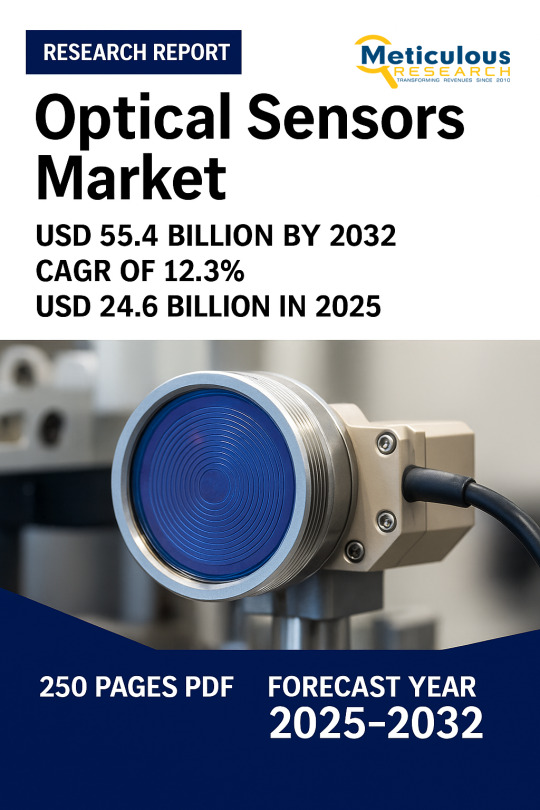
Meticulous Research®—a leading global market research company, published a research report titled ‘Optical Sensors Market—Global Opportunity Analysis and Industry Forecast (2025-2032)’. According to this latest publication, the optical sensors market is projected to reach $55.4 billion by 2032, at a CAGR of 12.3% from 2025 to 2032.
The optical sensors market is experiencing growth driven by the rising demand for optical sensors in consumer electronics and the increasing integration of highly sensitive light sensors in automotive applications. However, limited range and line-of-sight requirements hinder market growth.
In addition, the increasing utilization of optical sensors in healthcare applications and the expanding adoption of advanced light-based technologies for contaminant detection in the food sector present significant growth opportunities for market participants. However, the market also encounters challenges, particularly the high cost associated with advanced optical sensors. Moreover, prominent trends in the optical sensors market include the rise in the adoption of 3D sensing technology in photoelectric sensors and the growing trend of Industry 4.0, IOT, and cloud computing.
Key Players:
The optical sensors market is characterized by a moderately competitive scenario due to the presence of many large- and small-sized global, regional, and local players. The key players operating in the optical sensors market are Broadcom Inc. (U.S.), Renesas Electronics Corporation (Japan), Analog Devices, Inc. (U.S.), Texas Instruments Incorporated (U.S.), TE Connectivity Corporation (Switzerland), Leuze Electronics Pvt. Ltd. (Germany), Honeywell International Inc. (U.S.), Rockwell Automation, Inc. (U.S.), Vishay Intertechnology, Inc. (U.S.), Hamamatsu Photonics, K. K. (Japan), ams-OSRAM AG (Austria), ROHM Co., Ltd. (Japan), ipf electronic gmbh (Germany), SensoPart Industriesensorik GmbH (Germany), and Festo SE & Co. KG (Germany).
The optical sensors market is segmented based on product, type, and end user. The report also evaluates industry competitors and analyzes the optical sensors market at the regional and country levels.
Among the products studied in this report, the photoelectric sensors segment is anticipated to dominate the optical sensors market in 2025. The high demand for photoelectric sensors, which enable non-contact object detection, along with the increasing need to improve system performance and efficiency in high-speed operations, are key factors contributing to the segment's leading position in the optical sensors market.
Among the types studied in this report, the intrinsic optical sensors segment is anticipated to dominate the optical sensors market in 2025. The significant share of intrinsic optical sensors, known for delivering precise measurements of light intensity and wavelength, along with their expanding applications in temperature sensing, pressure monitoring, and chemical detection, are driving the segment's dominance in the optical sensors market.
Among the end users studied in this report, the consumer electronics segment is anticipated to dominate the optical sensors market in 2025. The substantial share of optical sensors in consumer electronics aimed at improving usability and user interaction, combined with the rising demand for smaller, more portable devices and the increasing use of image sensors to enhance camera capabilities for high-resolution photography, are key factors reinforcing the segment's dominance in the optical sensors market.
This research report analyzes major geographies and provides a comprehensive analysis of North America (U.S. and Canada), Europe (Germany, U.K., France, Italy, Spain, Netherlands, Switzerland, Sweden, and Rest of Europe), Asia-Pacific (China, Japan, India, South Korea, Malaysia, Australia & New Zealand, Indonesia, Singapore, and Rest of Asia-Pacific), Latin America (Mexico, Brazil, and Rest of Latin America), and Middle East & Africa (UAE, Saudi Arabia, Israel, and Rest of Middle East & Africa).
Among the geographies studied in this report, North America is anticipated to dominate the optical sensors market in 2025. The expansion in the adoption of smartphones, electric vehicles, and diverse smart home applications, alongside the rising demand for advanced safety systems and vehicle technology and the increased use of optical sensors in healthcare applications within the region, are key factors contributing to the market's dominant position.
Download Sample Report Here @ https://www.meticulousresearch.com/download-sample-report/cp_id=6040
Key Questions Answered in the Report-
What is the value of revenue generated by the product, type, and end user?
At what rate is the global demand for optical sensors projected to grow for the next five to seven years?
What is the historical market size and growth rate for the optical sensors market?
What are the major factors impacting the growth of this market at global and regional levels?
What are the major opportunities for existing players and new entrants in the market?
Which offering segments create major traction in this market?
What are the key geographical trends in this market? Which regions/countries are expected to offer significant growth opportunities for the manufacturers operating in the optical sensors market?
Who are the major players in the optical sensors market? What are their specific product offerings in this market?
What recent developments have taken place in the optical sensors market? What impact have these strategic developments created on the market?
Contact Us: Meticulous Research® Email- [email protected] Contact Sales- +1-646-781-8004 Connect with us on LinkedIn- https://www.linkedin.com/company/meticulous-research
#Optical Sensors Market#Photoelectric Sensors#Fiber Optic Sensors#Image Sensors#Ambient Light & Proximity Sensors#Through-beam Sensors#Retro-reflective Sensors#Biometric &
0 notes
Text
This is a great breakdown of phone cameras and worth a read if you do most of your photography with a phone.
Phone cameras are comparable to or better than many point-and-shoot digital cameras (especially older generation cameras, and this has been the case for several years now). But there is no such thing as a "pro" phone camera, just like there's no such thing as a "pro" point-and-shoot.
You can get really great photos and they can absolutely serve your needs. It's a fantastic solution if you're not in a position to carry extra gear with you.
But they are not "pro".
They can also be a perfectly acceptable tool for photography as an art form. You use the tools and explore and maximise their capabilities as you feel driven to. You certainly limit yourself in major ways with a camera phone, but that's part of the art. ALL photography is bound by the limits of your tool, and the entire point is to work within those and push your craft to see what you can do. So you can use the camera phone AS a pro (i.e. someone who understands the tool and principles of photography), but you have to understand the tool for that.
If you want a pro camera though, get a real camera.
Also, you need to identify the type of photography you like or want to do in order to choose the right camera.
I do a LOT of handheld, low-light photography w/o flash (museums, early or late hiking, etc.) so the sacrifice of low light quality in these cameras is the wrong decision, to me. But I also have a real camera which specifically caters to what I do. You just need to choose the tool or work within the bounds of what you have.
Smartphone cameras are NOT getting worse. (See below for phone photography tips)
I've now seen 3 pro photographers reviewing the iPhone 16 and complaining the cameras are "worse" and blaming Apple for not including revolutionary new camera technology.
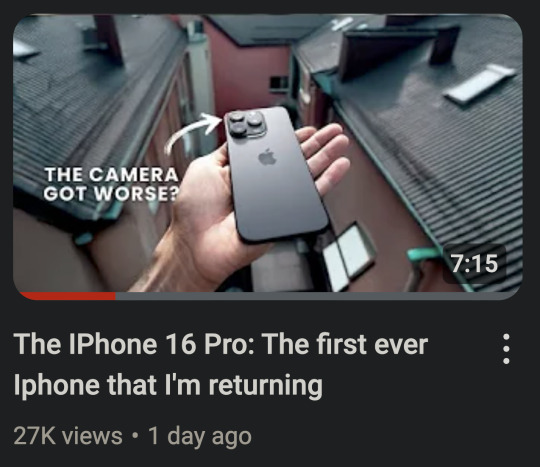

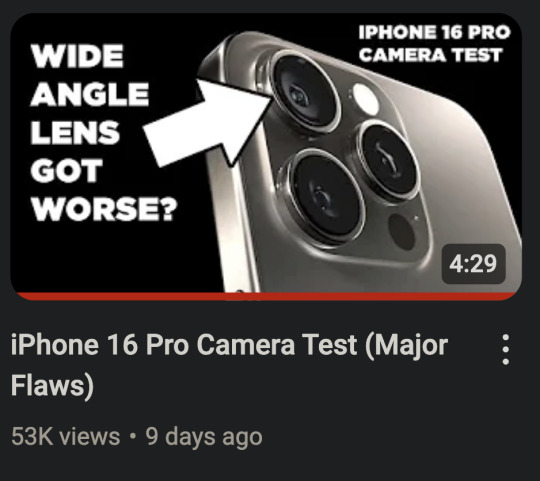
And I suppose this is partly Apple's fault. Their marketing and hype machine always goes overboard. But also, that's just how marketing works. Samsung has a "200 megapixel" sensor and Sony has a "Zeiss" lens. And I think it is unrealistic to expect smartphone companies to say "This product has entered the iterative phase and each new model will only be marginally improved over the last one."
Smartphones (from any brand) have become an appliance. You don't buy a new model of microwave every year. And you don't expect every new model of microwave to have new revolutionary technology. And that is pretty much the expectation you should have with most computer hardware from here on out.
And in some ways, that is a good thing. That means the design of the phone has pretty much been perfected and it will last you a long time if you take care of it. You will not be left behind and your phone will be able to handle any new software for most of its lifespan.
So, is Apple getting lazy or is there a reason their hardware is stagnating?
It seems that neither money nor marketing can change the laws of physics.
They cannot make transistors much smaller. Phones and computers are about as fast as current hardware designs can make them (unless there is a shocking scientific breakthrough). From here on out, heavy compute tasks that are beyond your phone or computer will be done in the cloud on giant computer clusters. Thankfully computers and phones seem to be plenty fast for the majority of tasks we ask of them.
I remember Katrina telling me her new computer didn't seem any faster. And I explained the computing tasks she does regularly were not really affected by the increased power and speed of her new computer. If something took 0.1 seconds before and now it takes 0.05 seconds, that is twice as fast. An increase in speed that looks fantastic in advertisements. But it is hard for our brains to perceive. She just didn't do anything on her computer that took it long enough for her to notice. But having a faster and more powerful computer/phone will increase its lifespan and resale value, so it is still prudent to get the best things you can afford at time of purchase.
And I'm afraid smartphone cameras are hitting their own hardware limitations. They can't make the sensors much larger to get better depth of field and low light performance. And cramming in more megapixels doesn't actually add much more detail, if any.
It's physics.
Again.
You cannot get any more performance out of a small plastic lens. Why do you think pro photographers haul around 10 pound lenses still?
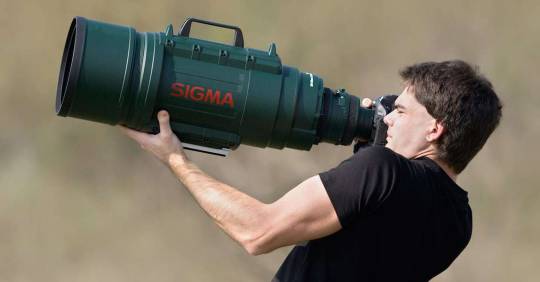
There is a formula for detail that never seems to be explained in any camera marketing.
Here is the simplified version...
Detail = Sensor x Lens
Let's say 1 is perfection. You have a sensor that performs at 0.5 and a lens that performs at 0.2.
The total detail will be 0.1.
But in the new model you increase the performance of the sensor to 0.8. WOW! That's so close to 1!
The total detail will be... 0.16.
Now let's imagine we've discovered a magic, physics-defying tiny plastic lens that performs at 0.8 as well.
The total detail jumps to 0.64!
But we all get sucked into a wormhole because we violated the laws of the universe.
Even if you were to design a near perfect (perfect is impossible) sensor that scores 0.99.
Without that magic plastic lens... 0.198
This is why I put Samsung's "200 megapixel" sensors in quotes. Because when paired with the same tiny plastic lens, there isn't much improvement. And that's why a 12 megapixel DSLR from 10 years ago with a giant honking lens can still capture more detail.
Most of the quality from smartphone cameras comes from the computational software processing. Phones actually take many photos at once and combine them to get you a decent image.

While that is still improving a little bit each generation, those improvements are stagnating as well. Until image processing can do a better job of inventing more detail realistically, smartphones are going to have to obey the laws of physics.
So... why are photographers saying the iPhone cameras are worse?
First, the ultra wide angle lens looks softer in low light.
And if you zoom between 1x and 5x, the images look less detailed.
But neither of those things make the cameras *worse*. In fact, the cameras are better for the most part. It's just that Apple decided to compromise on one aspect to improve another. Probably due to market research telling them most people prioritize certain things over others when taking photos.
They increased the resolution of the ultra wide angle sensor to match the detail of the main sensor, but that seems to have lowered the low light performance of the ultra wide. So in good light, you will see an improvement in sharpness. But they could not increase the sensor size to compensate and smaller pixels can have trouble with dim conditions. They probably discovered that people mostly use that lens in good light and they would appreciate the bump in detail more.
But pro photographers often photograph in more challenging lighting conditions because you can capture a more artistic shot. I don't think I could have gotten this shot on a smartphone.

But photo normies are just taking pics of their kids doing weird kid shit.

They aren't really trying to push the limits of their ultra wide angle lenses.
And they increased the zoom of the telephoto lens to 5x from 3x because most people never used the 3x. So images at 5x look great now, but unfortunately if you use anything between 1x and 5x, your image will be *digitally* zoomed. Which is never as good as optical zoom. They basically crop the photo, zoom in, and add sharpening.
So they prioritized people having longer reach and more zoom at the expense of that middle zoom range. Every camera system makes tradeoffs and compromises.
And I hate that I always feel like I am defending Apple, because they do have misleading and dishonest marketing regarding a lot of aspects of their tech. But hating on Apple gets more clicks so content creators also make misleading and dishonest claims.
And so we are just surrounded in a circle of hyperbole from all sides.
Now, if you know these limitations, you can change your approach to photographing stuff to keep them from being an issue. You can reap the benefits without dealing with the new compromises.
Here are some tips to help owners of the new iPhone, but also everyone else too.
Smartphone Photography Tips
Whenever possible, try to use the main 1x camera at only 1x zoom. This has the largest sensor with the most detail and works best in the lowest light. Only use the ultra wide or telephoto if you cannot get the photo otherwise. If you aren't sure you have enough light for ultra wide, take the photo, and then as a safety, take two photos with the main camera side by side and stitch them later with a pano app.
"Zoom with your feet" and don't use "in-between" zooms. Let's say your lenses do 0.5x, 1x, and 5x zoom. Even though you have the option to use other zooms, like 2x or 3x, that is going to compromise your picture quality. It is essentially going to crop your photo and enlarge it, which causes a loss of detail. If fact, if you use 4.5x instead of 5x, your picture will probably look like trash. You are always going to get better results if you can move closer or step back so that you are using the native focal length of your chosen lens. For example, let's say you are taking a photo and you judge the best framing to be at 4x. But you still have 10 feet of space behind you. If you back up and then zoom in to 5x, the phone will switch to that lens and you will get a much clearer picture.
Rule of thumb...
1 to 3x... try to move closer.
4 to 5x... try to move back.
If you hit a wall and end up at 4.5x, you might see if you have a panorama mode and try that instead. Switch to your 5x and do the pano. Or you can take two photos and then stitch them together with software later on. (Stitching panos with an app later will give better quality than pano mode, especially in low light.)
Low light needs stability. Get some sort of stabilizing device for low light photos. Either a phone case that lets you stand up the phone on its own or a mini tripod.
This thing folds to the size of a credit card.
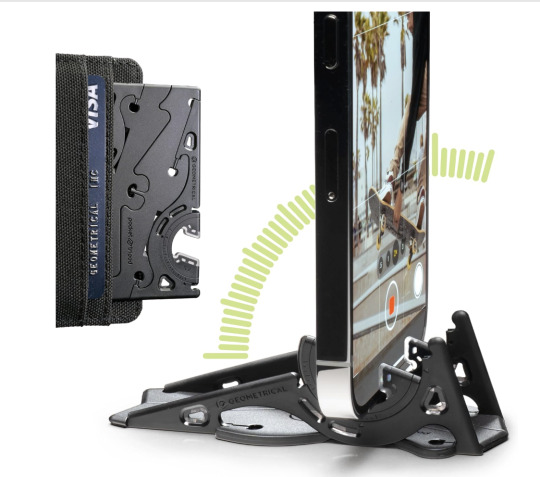
Your phone will detect when it is stable and not being handheld. It will then automatically extend its shutter speed allowing it to drink in more light and give you a better picture.
Tripods are photography magic and will improve your low light photos quite a bit. Motion blur of moving subjects can still be an issue, but photos of a cityscape or landscape will look great.
For selfies, shoot a little bit wide and then crop in. This goes a little contrary to my earlier advice saying cropping lowers detail, but this is specifically for shooting a face. The 0.5x and 1x lenses on smartphone cameras are fairly wide angle. This can cause unflattering proportions with human faces. Wide angle lenses exaggerate distance. Near things look very near and far things look very far. To a wide angle lens, the tip of your nose looks like it is super close but your ears seem like they are a mile away. And that's why you may look a bit "alien" in your selfies.
People's natural instinct is to "fill the frame" with a face. The outer edges of a wide angle lens are more distorted than the very center. So try to keep faces away from the edges of the frame.
And one other trick you can do for selfies and pictures of faces is step back a few feet. Sometimes this is hard, especially with selfies, as your arm is only so long... but if you can take your face photos from just a little bit farther back, you will almost entirely eliminate unflattering distortion. In some cases, just stretching out your arm as far as it will go is enough.
Then you just crop the image with the framing you originally wanted, and your facial proportions will look great.
An example...

Here the distortion is bad because I am not in the center and the lens is too close to my face. The lens thinks my nose is really close and my ears are in Canada.

But when the lens is farther back the edge distortion is less prevalent and my nose and ears (relative to the lens) seem roughly the same distance away. So my proportions look great, but I don't quite have the framing I want.
But with a little cropping...


For social media there is still plenty of resolution to crop in. Cropping isn't bad, it's just always better to use it as a last resort or in a special circumstance like this. I get roughly the same framing as in my wide angle shot, but I don't look like I'm behind a door's peephole trying to sell you the Good News.
I wish they made a "mini" selfie stick that only extended a foot or so. With the main camera that is usually all people need to undo any wide angle issues. I have one of those mini tripods and that works well, but there is no activation button so I have to do a timer. Mirrors work great to help you get some selfie distance.
In any case, all cameras have limitations and compromises. Clickbait titles saying something is WORSE THAN THE OLD ONE are frustrating and wrong.
And people upgrading phones every year are silly. All current name brand smartphones have promised at least 5 years of software updates. I think Google and Samsung are offering 7 years on some models. And Apple has always just let you use your phone until it literally will not work with new software. Which has worked out to 8 years in some cases (with a battery swap).
Phones are now appliances. For now, hardware will improve 10 to 15% from generation to generation until physics breaks. So if you want a 50% improvement, wait 5 years and you'll think your new phone is awesome. If you upgrade every year, it is going to be difficult to see the change.
I hope to be starting a little course on smartphone photography in the near future. All modern phones are capable of taking amazing pictures. And as long as you understand their limitations you can mitigate or avoid them. And that is what I plan to teach.
#photography#bound by physics is right#lens size and sensor size are inherently tied to real life physics and there is a hard limit on how small you can make them#even if you continued to miniaturize everything else#your sensors and lenses are capped and cannot physically get smaller without sacrificing image quality#anyway part of the art is to pull things off even with substandard (phone) cameras#commentary#i wouldn't do an iphone tho lol. joke phone. 😂#more people need to understand zoom on phone cameras. if you're pinching in to 'zoom' you're probably failing#most of those are digital zooms which are the equivalent of cropping and enlarging the original image#it's a fake zoom and frankly they shouldn't exist#the only zoom you want is an optical zoom. it's not a zoom if it's not optical
700 notes
·
View notes